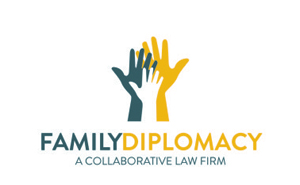Protecting Your Children from High Conflict Divorce
Divorce court here in Florida is a terrible way to resolve disputes. Divorce litigation is an adversarial proceeding where husband is pitted against wife, mother is pitted against father.
And it is the children who end up suffering the most.
But don’t take my word for it. Tampa psychologist Stephanie Moulton Sarkis writes about the consequences of high conflict divorce on children:
Somatic Disorders
Somatic disorders are physical ailments caused by stress, depression, and anxiety. When a person is under stress, the sympathetic nervous system is activated – the “fight, flight, or freeze” response. This activation occurs more often in children of high-conflict divorce (Davidson, et al. 2014). Chronic activation of the sympathetic nervous system releases a stress-producing hormone called cortisol into the body.
Chronically high cortisol levels can cause lifelong health issues such as headaches, gastrointestinal issues, weight gain, depression, anxiety, sleep difficulties, memory loss, concentration difficulties, and even heart disease.
Concentration and sleep difficulties can lead to poor academic performance, and also can lead to children being less likely to use effective coping skills.
Increased Delinquency and Truancy
A twenty-five-year longitudinal study found that when divorced parents diverted their attention away from the children and towards maintaining conflict, those children had a higher rate of delinquent behavior and truancy from school. When parents redirected their focus back to the children, this level of delinquency and truancy decreased (Wallerstein et al. 2013).
Lasting Emotional Effects in Adulthood
Out of 739 adults who were children when their parents divorced, 75% said they were exposed to parental alienation behaviors, and many stated they felt “loyalty conflict” with their parents. Fifteen percent agreed at least one parent “tried to turn me against the other parent” Adults with a history of childhood alienation experiences had a significantly lower quality of life than adults who did not experience parental alienation and loyalty conflict (Bernet et al. 2015; Verrocchio & Baker 2015).
Dr. Sarkis suggests that rather than maintaining the conflict through the court system, parents engage in alternative dispute resolution methods such as collaborative divorce. In collaborative divorce, each parent has the support of his or her own lawyer, and the lawyer limits their representation to out-of-court dispute resolution. This means that the lawyer has no incentive to encourage fighting between the parties, because if either party engages in litigation, both collaborative attorneys are off of the case.
In collaborative divorce cases, the parents usually consult with a neutral facilitator who has a mental health background. The neutral facilitator helps the parents focus on what is most important to them (the children) rather than the arguments of the past. The neutral facilitator also helps create a parenting plan that is developmentally appropriate for the children. He or she may even help the parents figure out how to do the really difficult things, like tell their children about the divorce.
If you have questions about how collaborative divorce can protect your children, schedule a time to meet with Adam B. Cordover at (813) 443-0615 or CLICK HERE to fill out our contact form.
Adam B. Cordover is an international leader in the field of collaborative divorce and has taught workshops on the subject throughout the U.S. and Canada. He is co-author of an upcoming American Bar Association book on collaborative practice, and he trains attorneys, mental health professionals, financial professionals, and mediators how to help families via collaborative divorce.




Leave a Reply
Want to join the discussion?Feel free to contribute!